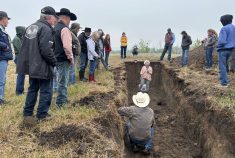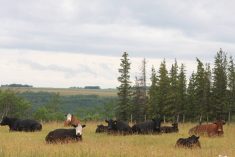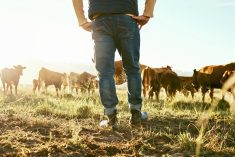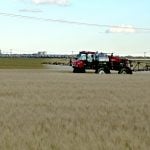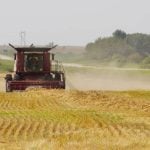— There is opportunity within complexity.
It was a remark that caught my attention during the Canadian Cattle Association’s screening of Reduce, Reuse, Ruminate in late April and was uttered by Robin White, who holds a PhD in animal sciences and is an associate professor at Virginia Tech.
The film focused on the feedlot sector’s use of food “waste” as feed (think cull potatoes, dried distillers grains and even the occasional dragonfruit). “Waste” is almost a bit of an overstatement, as this is often perfectly good food that people won’t buy at the grocery store — a crooked carrot or bruised potato. Feedlot operator and CCA past president Bob Lowe was asked whether they had to check for spoilage. He noted that the people at the feedlot had been bringing home fruits and veggies from the feed truck for years. They find the occasional bread bag, but those are easy to spot, he said, and the trucks have magnets to pull out any metal.
Read Also
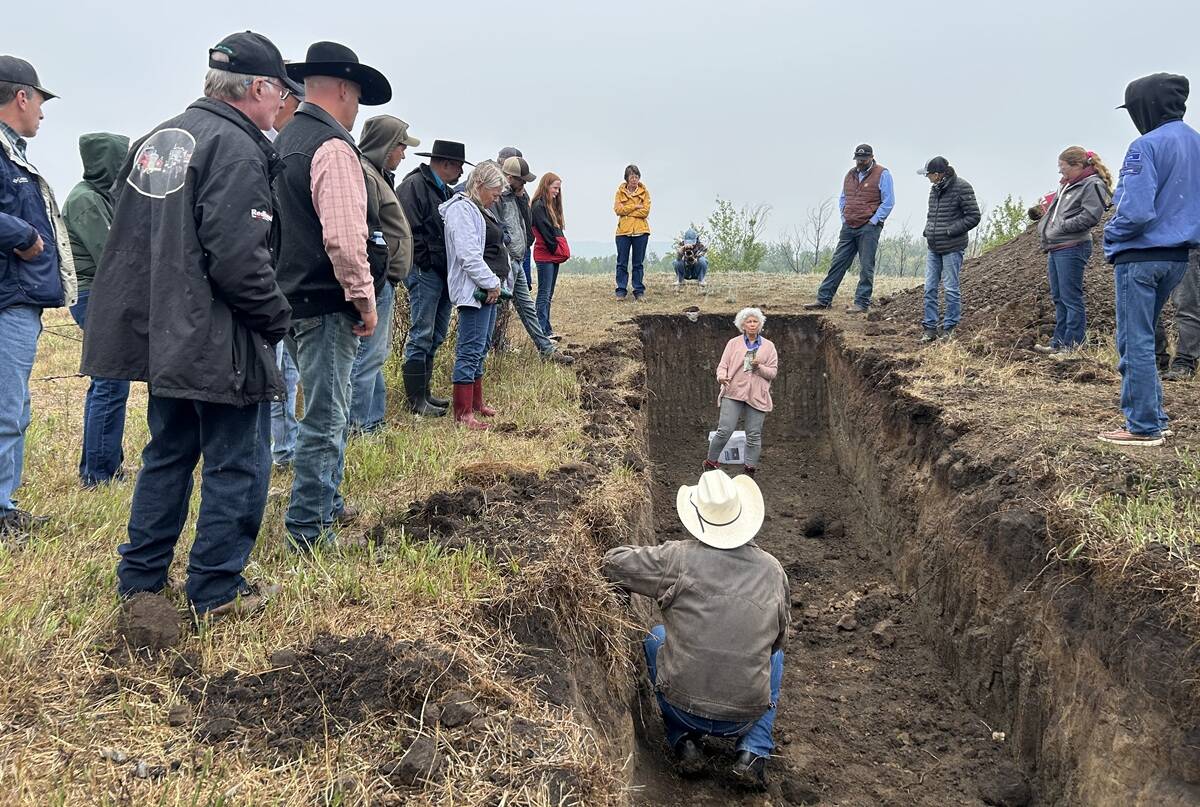
Improving soil health on the ranch
Yamily Zavala, PhD, talks soil health for farmers and ranchers at a grazing club field day at Paradise Hill, Saskatchewan.
Livestock are, in many ways, an elegant solution to the big, messy problem of food waste and loss, especially when you factor in weather-damaged crops. It’s an old concept, but people keep tweaking it to fit their situations, whether it’s a feedlot sourcing cull potatoes from Cavendish or a smaller farm signing up for the LOOP program. The CCA has been highlighting this with its “Filters to Feedlots” campaign, which you can read more about in this issue.
But how do you find opportunity in big, messy situations? It’s very easy to get overwhelmed by the sheer size and complexity of the mess.
One approach that might work, at least for some situations, is marginal gains theory. Beef cattle specialist James Byrne recently wrote about applying it to dairy and beef operations for the Ontario Ministry of Ag’s Dairy and Beef Cattle Production site. The theory comes from the world of Olympic cycling, and has three principles:
- The change must be small, but the outcome must be large.
- The change should be easy or simple to apply.
- The change should be relatively inexpensive to deliver.
In other words, look for the low-hanging fruit.
Byrne walks readers through a feedlot to see how these principles can apply. Increasing average daily gain by one per cent is a relatively small change that leads to a huge outcome — for a feedlot finishing 1,000 cattle over 330 days, that can add up to 8,700 pounds of extra weight, and $21,000 in more cash, if those calves were sold in April 2024 in Ontario. Byrne is assuming in this example that the calves were gaining 2.2 pounds the first 150 days and three pounds per day the last 180.
But that one per cent increase in average daily gain must result from a simple change, such as a tweak in the ration. And it should be a relatively inexpensive change, at least in proportion to the benefit.
You can use this lens to view all kinds of things on your operation — potential changes to your grazing strategy, winter feeding program and herd genetics. It’s also helpful if you’re considering lifestyle changes, such as starting a new exercise regime or dietary changes. I’ve also adopted it (without calling it marginal gains theory) when finishing a book — it’s way easier to dedicate 20 to thirty minutes a day early in the morning to revising and editing than finding big blocks of time in the week.
Of course, there may be times in your life or business when you need to pivot, to make big, transformative changes, but don’t underestimate the power of steady habits and small changes. (You can read Byrne’s full post here).
If you’re thinking about making some changes to your operation, I have a few suggestions for sources, beyond the pages of this magazine. Well, maybe not entirely outside this magazine. The first is an ebook, by holistic management rancher Don Campbell. Campbell has compiled his columns, originally published by Canadian Cattlemen, and is offering the book as a free PDF. At press time, Campbell reported it was available through holisticmanagement.ca and holisticmanagement.org.
There are also several events this summer, listed in the back of this magazine, that promise all kinds of opportunities. Several of the breed associations are hosting international events this year, plus there are grazing schools, field days and cattle shows. On the business side, Saskatoon is hosting the International Farm Management Association Conference July 7-12. Kathy Larson, who’s on the planning committee, says it was last held in Western Canada in 1997, so it’s a once-in-a-career event. Ag in Motion is slated for July 16-18 in Langham, and Saskatoon is hosting the Canadian Beef Industry Conference on August 19-22. All these events will have an official schedule and tours, but often one can find opportunity by talking to people during breaks or while on the bus tour.




